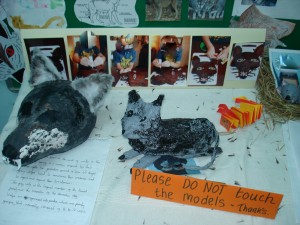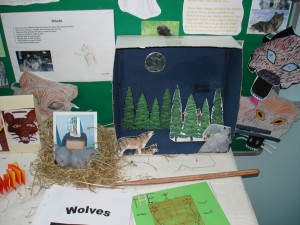A few posts back I was waffling on about homework and what you should be thinking about before setting or photocopying it. Well in this post I am going to give you a simple alternative which is easily adapted to almost all age groups and situations…
Have you ever struggled with completing an assignment or art/DT project. It is well documented that we will learn and express ourselves in different ways. I prefer the visual technology approach, while others prefer the medium of music or painting. When completing assignments at university you have to adapt and present your thoughts and research in a particular format – which may or may not be your ‘chosen’ format. Essentially the assessment should allow everyone to present the information in a way they prefer. This is reflected in the new revalidated modules where many of the assignments have a general description rather than a prescribed format for submission.
So can this be transfered to children’s homework? Well, in my opinion, yes it can, and, in many ways, it allows homework to be more child centred and focus on individual learning. In order to demonstrate this, I wanted to provide you with an example of how I used to set homework while teaching.
Weekly activities-Every week there was set days and tasks. Within the week, Monday and Wednesday were the days I gave homework which focused on learning spellings and developing their understanding of mental arithmetic, linked to either number bonds or multiplication/division facts. These tasks were short and could easily be completed within ten to twenty minutes. Everyday the children were also encouraged to read which included; silent reading, reading to an adult and an adult reading to the child.



Open ended task – This was a homework task which was started at the beginning of a topic or after a visit or trip. Essentially this task started with either a word or a question. For example this might be a word to do with a topic – Vikings, Rivers or a question such as “What is on Mars?”. The children would have a limited but length time to complete their product, usually until half term or just after but what they produced was up to them. Some ideas would be provided for those children/parents who needed a starting point, but the finish products would be anything. Past examples have included things which have been baked – cakes and cookies, made – models, puppets, or even documents – posters and books. Children and parents often went on trips and took photographs and really engaged with the research and creation of the final product.
Here are some examples from a homework task that was given after the children went to the theatre to see a production. It was about an imaginary wolf which lived in the forest and so the word ‘wolf’ was given as a starting point.
You can see from the images, that there was a range of products. I have blurred the children’s faces within the photographs. The parents commented on the task at the next parents evenings saying how much better the task was compared to the ‘usual’ textbook approach and how it allowed their child to complete the task in their own way, working to their strengths. They also commented about how more engaged the children were and that they had actually ‘enjoyed’ completing their homework.
There was, of course, no judgement on the quality of the final products, everything was put on display for the children to enjoy.
Have a think about the way this was done and have a go yourself and see what you think.
